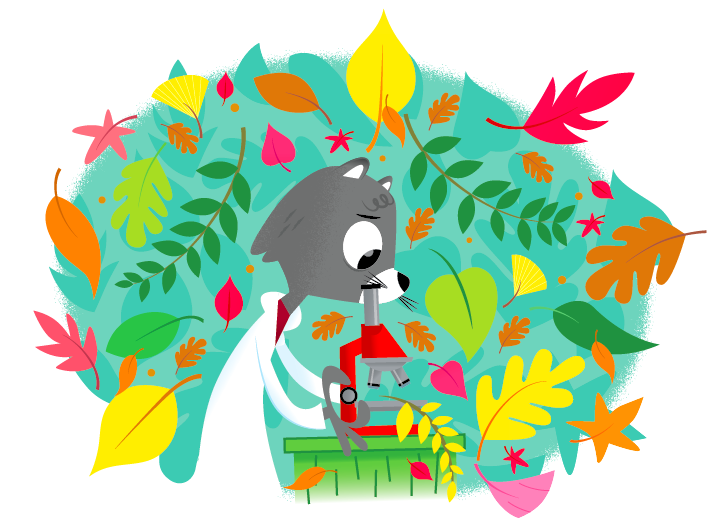Dear Francesco,
Last fall, my friend Lee Kalcsits and I went exploring in the apple orchards of Wenatchee. The apples were ripe and the leaves were changing from green to gold. We plucked a few leaves and took them back to his lab.
 “You know, if you take a stem, pull away all the mature leaves, and slice it from the top down, you can look at it under the microscope,” said Kalcsits, a scientist at Washington State University in Wenatchee who studies all kinds of trees.
“You know, if you take a stem, pull away all the mature leaves, and slice it from the top down, you can look at it under the microscope,” said Kalcsits, a scientist at Washington State University in Wenatchee who studies all kinds of trees.
He slid a tiny piece of the stem under his microscope and took a closer look.
“What it looks like is these tiny, moon-shaped leaves,” he said. “They get smaller and smaller until you get this dome-shaped structure and that’s the meristem.”
The meristem is the part of a plant where leaves begin to form, he explained.
It contains a bunch of building blocks, or cells. In a way, these cells are a lot like the ones animals have. Some of our cells will form into parts like our liver and muscles. Others will form into nerves and blood.
The meristem is a growing point for other plant parts like buds and flowers, as well as leaves, Kalcsits said.
While the meristem tells leaves to grow, sometimes trees get a signal to stop growing, too.
As the days get shorter and colder, some trees’ cells will start to act like scissors. They start “snipping” the leaves. The leaves fall and the tree gets ready to hibernate to survive the cold winters.
The meristem will also send a signal to the tree to form a small bumpy bud. A layer of scales will form around the bud to help protect it from the cold.
“Within that bud will be all the leaves and flowers ready for the next year,” Kalcsits explained.
In spring, as the weather warms up, new life emerges. Tiny green leaves start to sprout from the buds.
While the answer to your question can most often be traced back to the meristem, some leaves form in more unusual ways.
Some plants can use their leaves to clone themselves. If just one leaf drops, a whole new plant will grow from it.
In another example, leaves of pea plants can form into tendrils: curly leaves that start climbing and grabbing onto things. Other plants will grow thorns and stickers in place of their leaves to protect them from animals. Some leaves will even grow their own leaves. These are called leaflets.
Leaves are important because they help plants turn sunlight into their own food. The process helps the plants survive, which is good for other living things, too.
For one, plants give us food, like the apples I picked after I left Kalcsits’ lab. Of course, leaves also help give us the air we need to breathe. Without them, life on Earth wouldn’t exist as we know it.
Sincerely,
Dr. Universe
Got a science question? E-mail Dr. Wendy Sue Universe at Dr.Universe@wsu.edu. Ask Dr. Universe is a science-education project from Washington State University.